In this two-part blog post we will compare conventional meat with edible insects.
You will discover what is the best choice, when it comes to taste, nutrition, food safety, sustainability and ethics.
Part one will cover taste and nutrition.
What will taste better? What will be the healthiest?
Let’s dive in to find out!
What tastes better? Edible insects or meat?

With more than 2100 edible insect species to choose from, it’s a complex question to answer. [1]
How many different types of meat have you sampled in your lifetime? Most people never get beyond the standard dozen-plus basics of chicken, beef, pork, lamb, turkey and 5-10 kinds of fish.
We all love our meat. That’s easy to understand; it has structure, plenty of fat, juice and flavor to please most of our carnivory desires.
There is something that meat can’t do, when it comes to flavor. And that is to cover the same diverse and varied flavors and experiences you can have with insects.
Insects can taste and behave pretty much like anything you can imagine.
You can get red wood ants that taste like sour lemon, fly larvae that taste like blue cheese or Witchetty grubs that taste like preserved garlic and macadamia nuts. [2]
Insects can be crunchy, fatty, creamy, meaty, juicy, tender, and if you are lucky, you can even catch a leg between your teeth like a strand of muscle when you are eating meat. [2]
I have always loved the taste, consistency and flavor of grilled red meat and still do. To be honest I never thought there would be another animal protein that could please me the same way.
That changed the first time I tried edible insects. I were at a local food market in Thailand, where I found a booth selling salted and fried crickets. I picked one, chewed, CRUNCH, and enjoyed a salty, fatty and savoury taste. And before noticing, my hand was already reaching for the next sample. They were that good.
The experience opened up a whole new world of flavors and I have never regretted taking that first bite.
Bottom Line:
The first round goes to edible insects for their huge variety of flavors, aromas and textures. Culinary elements that you will never be able to find within the range conventional consumed meats.
If you are like most conservative eaters. Then you likely prefer to stick to what you know. But if you feel adventurous, you’ll be able to find a whole new world of flavors too compelling to resist.
Edible insects 1 - Meat 0
What is healthier? Edible insects or meat?
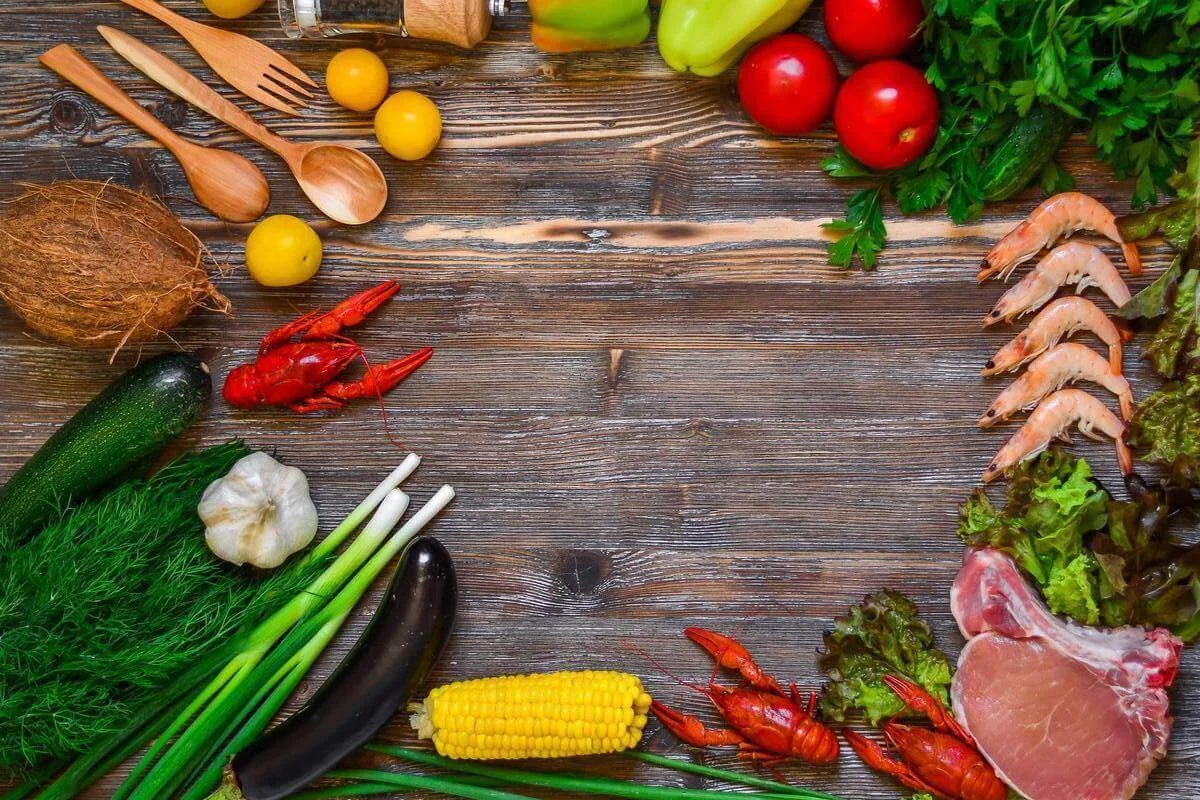
Health is such an important topic to address.
We all want to live longer, and what we eat will have a big influence on our health and the quality of our life.
Luckily, we can make a few minor adjustments and reap lots of benefits.
One of them is looking at edible insects compared to regular meats sources.
The foods we eat today provides more than nutrients to our body. We thus have to look at health from many sides.
Let’s begin with nutrition.
Nutrition
Let’s have a look at the differences. Here is an comparison with the most eaten animals and insects.
We can look at nutrition based on the the different nutrients that our food provides. This will make the comparison between meat and edible insects a lot easier.
Let’s begin with protein.
Protein

Protein is an important nutrient.
The benefits of a high protein intake (25-30% of your calories) include weight loss, increased muscle mass and strength.
The quality of the protein source can vary and depends on three things:
- Protein content (measured as the amount of protein present in grams or % per 100g)
- Protein quality (The amount and types of essential amino acids measured in grams)
- Protein digestibility (The amount of protein you can digest measured in %)
Edible insects (60% protein) are higher in protein content compared to chicken (43%) or beef (54%). On average, only fish (81%) surpass insects in protein content. [3]
Both edible insect proteins and meat proteins have high levels of high quality proteins. Of the total protein content between 50-80% are essential amino acids [4,5]
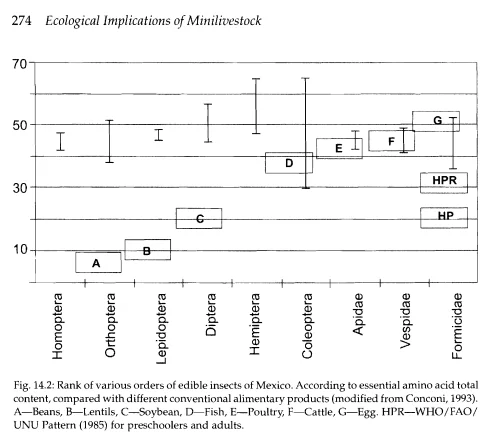
The figure shows the total essential amino acid content of different edible insects compared with conventional plant and meat proteins. [5]
Insect protein digestibility ranges from 76-98 %. [6,7,8] This is the same or smaller than beef (98%). [9,10]
Bottom Line:
This one is a tie. Even though fish surpass the average protein content of edible insects. Edible insects still have a higher protein content, when you average out the protein content for the most consumed meats. In general edible insects contain the same amount of quality protein compared to meat.
Edible insects 1 - Meat 1
A personal anecdote about protein intake.

My own experience have shown that the amount of protein we need to lose weight, gain muscle, and strength is a lot less than we are believed to think.
Since I switched from omnivores diet to an entotarian diet I lost fat mass and increased muscle mass without changing my exercise regime.
By switching diets I reduced my protein intake from around 30% of my total calories to around 15% of my total calories.
Fat
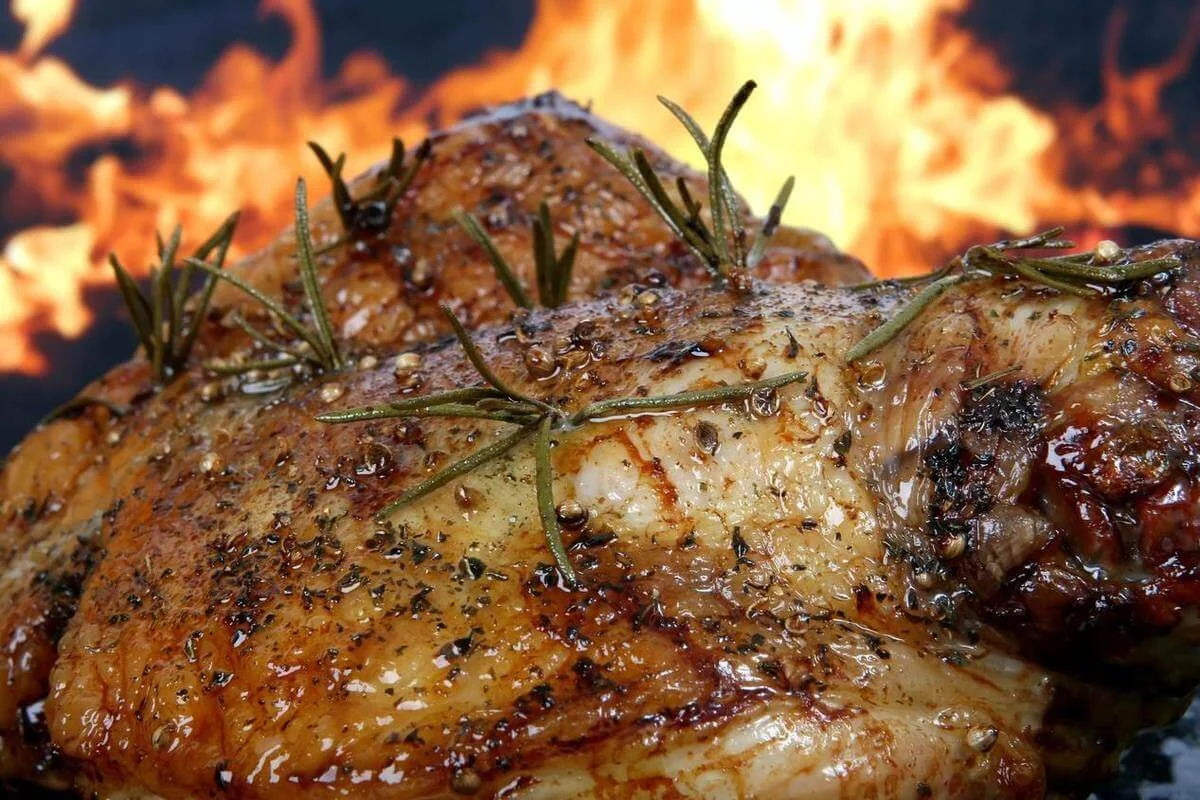
We divide fatty acids into monounsaturated, polyunsaturated, saturated and trans fats.
The difference between these fatty acids lies in their chemical structure and how they affect the body.
Unsaturated fatty acids are in general the healthy fatty acids. You get them through plants and fatty fish.
Saturated fatty acids, and trans fats, in too high amounts are generally not good for you. You find them in almost all animal sources as well as in fried and baked foods.
Edible insects and fish are one of the few animal sources that contains higher unsaturated fatty acids than saturated fatty acids. [11]
By switching from beef, lamb or chicken to fish or edible insects, you can increase your healthy fat intake, while keeping your protein intake high. [11]
Bottom line:
Again fish comes to save the day for meat and we end up having another tie between meat and edible insects. Both edible insects and fish contains high amounts of healthy fatty acids.
Edible insects 2 - Meat 2
Fiber
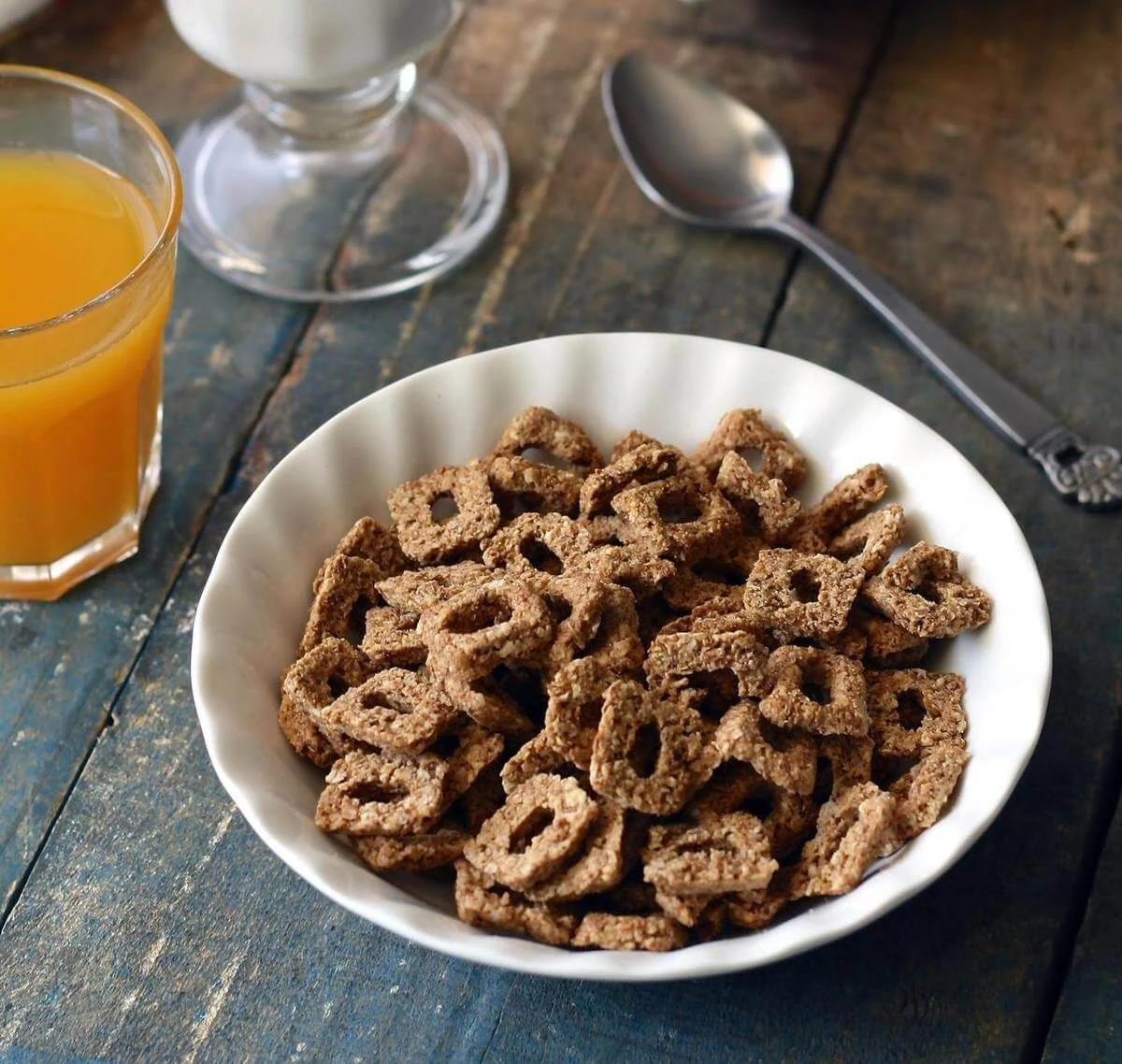
Wait a moment? Fiber? In meat and in edible insects?
Yes, edible insects have a form of fiber in their exoskeleton called chitin. [11]
Chitin act like cellulose in the human body and due to this effect it is often called “animal fiber”. [12]
Edible insect fiber contents range from 5.1% for termites to 13.6% for true bugs (Hemiptera). [13,14]
To humans, chitin is an indigestible fiber, meaning the body is not able to digest it. Thus, it acts as food (prebiotic) for the healthy bacteria in our gut.
Thereby promoting our immune system, gut health and reducing inflammation. [15,16]
Chitin has even helped some individuals to be more resistant against pathogenic bacteria and viruses. There are also indications that chitin could reduce allergic reactions to certain individuals [16,17,18].
Bottom Line:
Edible insects are high in insoluble fibers in the form of chitin. Eating edible insects high in fiber can boost your immune system, increase your gut health, reduce inflammation, and even help reduce allergic reactions.
Another point for edible insects.
Edible insects 3 - Meat 2
Minerals
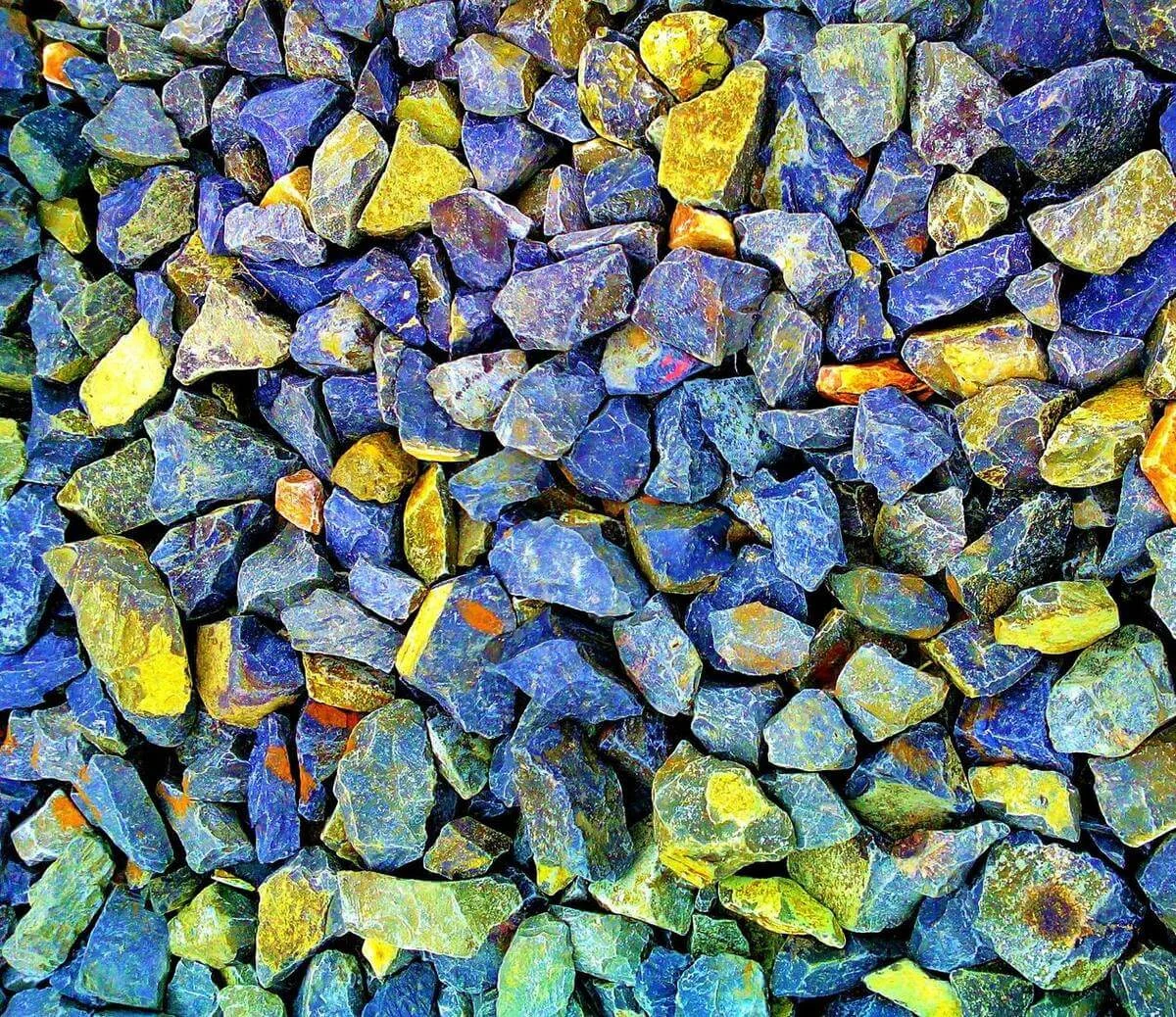
Minerals play an important part in all our body’s biological processes.
A study measured and compared the mineral contents of four insects; crickets, grasshoppers, buffalo worms, and mealworms to that of beef. [19]
Cricket and sirloin beef had higher levels of iron, calcium, and magnesium. Crickets contained the greatest available amount of iron, trumping even beef.
Additionally, the scientist found that copper, zinc, manganese, magnesium, and calcium in crickets, grasshoppers, and mealworms were more available for absorption than the same nutrients in beef.
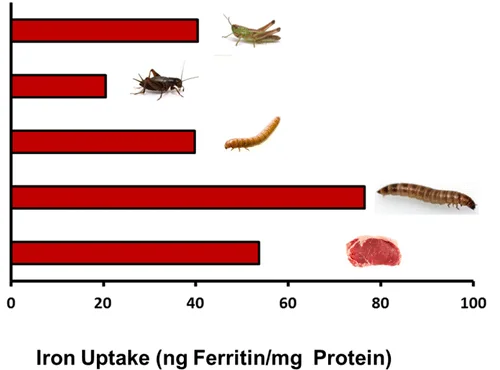
The graph shows the amount of ng iron absorbed per mg of protein (ferritin is marker for iron absorption). Here we can see that the mealworms has highest amount of available iron per mg of protein. [19]
Bottom line:
Edible insects contain minerals that are more available for absorption than that of beef. Also, Crickets contain a higher amount and more bioavailable amount of iron compared to beef.
Edible insects 4 - Meat 2
Vitamins
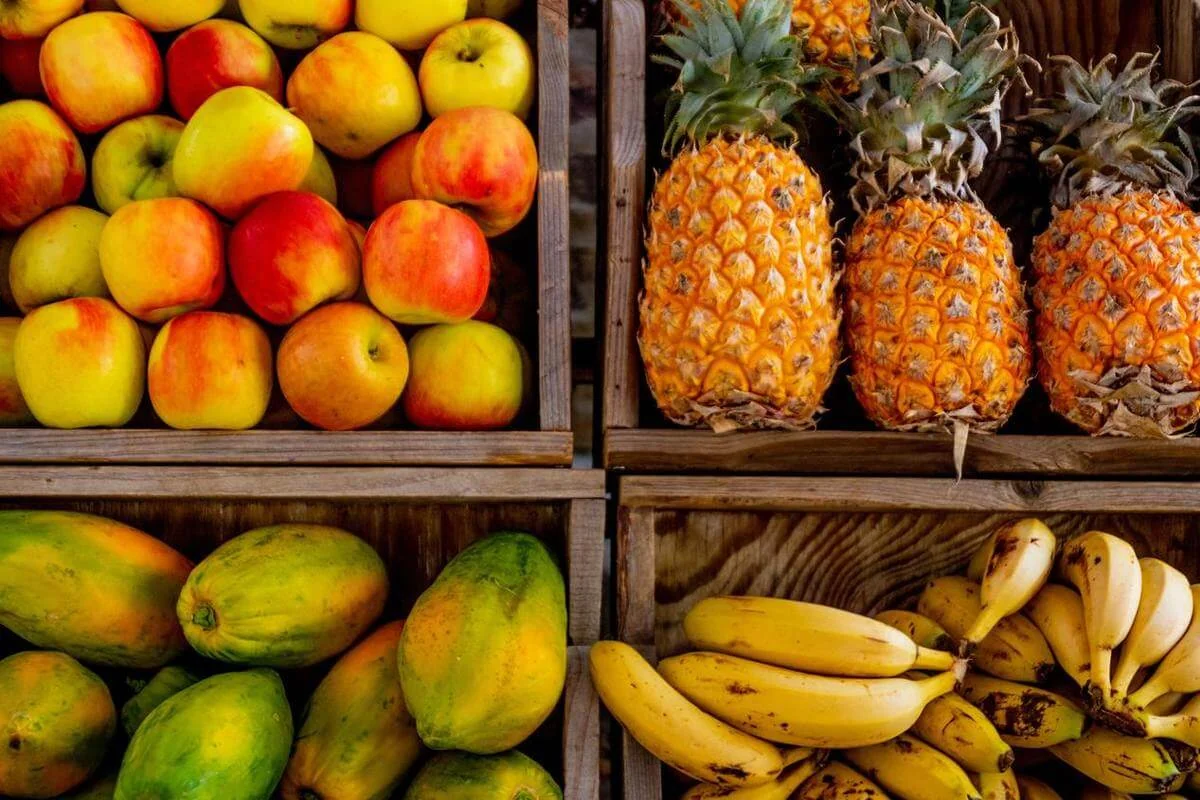
Vitamins are essential for stimulating our body’s chemical processes and enhancing our immune functions.
Edible insects have in general higher vitamin contents and bioavailability than that of conventional meats, except for vitamin B-12. [1]
This does not hold true for crickets that can contain several times more B-12 than most conventional meat. [20]
Bottom line:
You can increase your vitamin intake and absorption by choosing crickets over meat.
Edible insects 5 - Meat 2
Conclusion of meat vs. edible insects - Part 1

When it comes to health and nutrition. There is nothing that comes close to edible insects. Not only are insects high in protein, but they also contain a wide array of important vitamins and minerals, fatty acids, and fiber to help you build and take care of that beautiful body of yours.
Meat also provides a fair amount of protein, but most meat contain more unhealthy fats and less bioavailable micronutrients, when compared to insects.
Besides, insects contain fiber. From what we have been able to dig up insects are the only animal protein that also contains fibre!
Edible insects are not only healthier when it comes to nutrients, but they can also taste way better than meat.
Edible insects are in the lead after the first part. Continue reading to discover who will win; meat or edible insects?
The next part of the blog post series will go into the differences between meat and edible insects, when it comes to food safety, sustainability and ethics.



